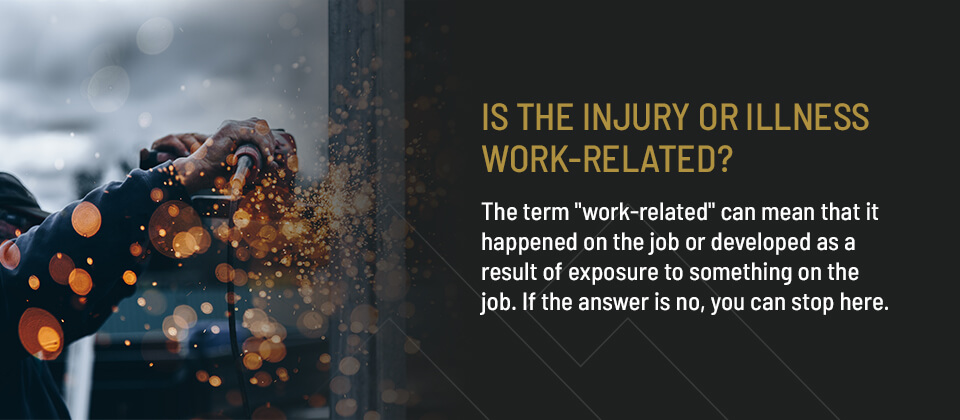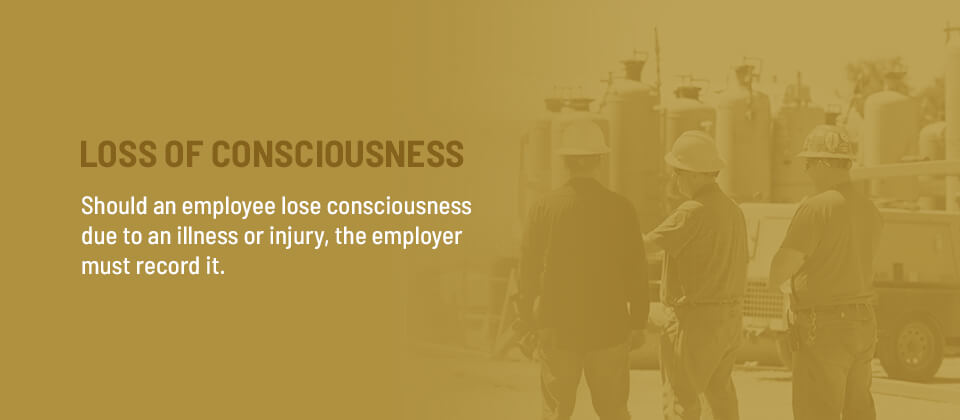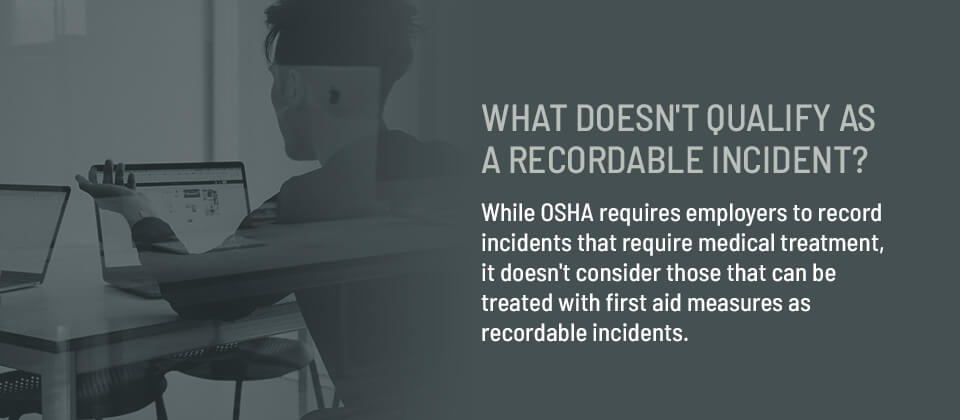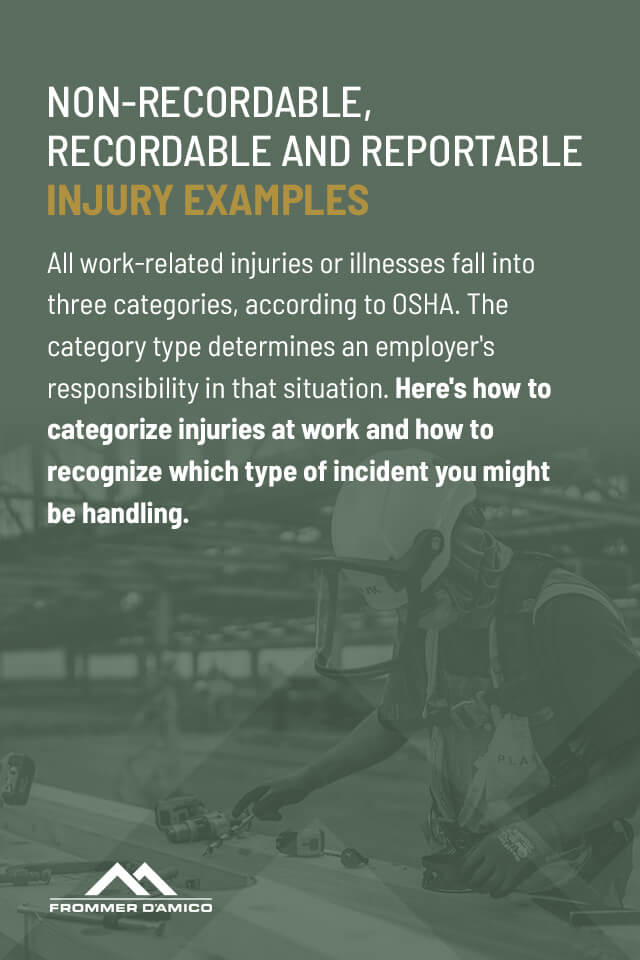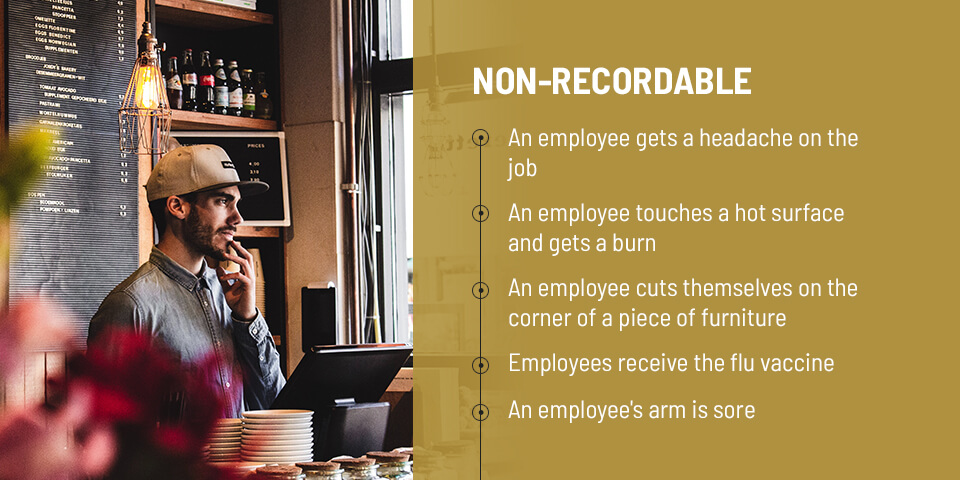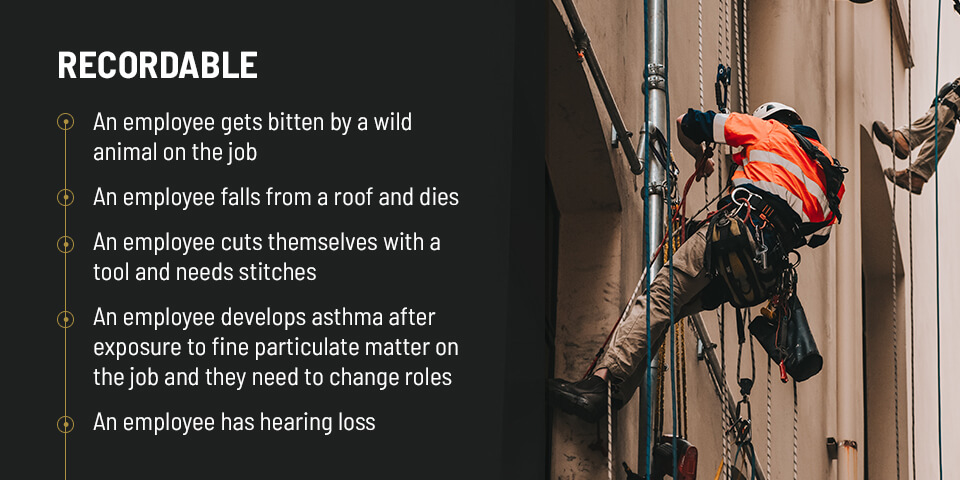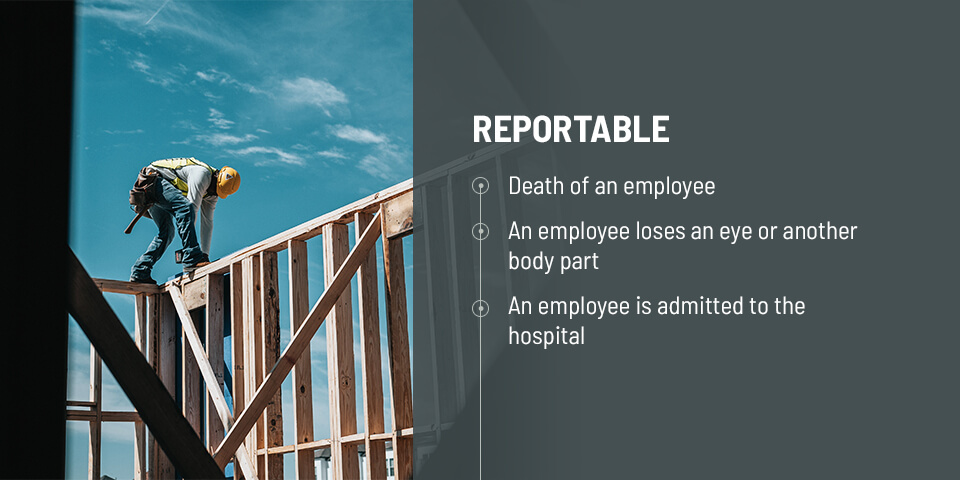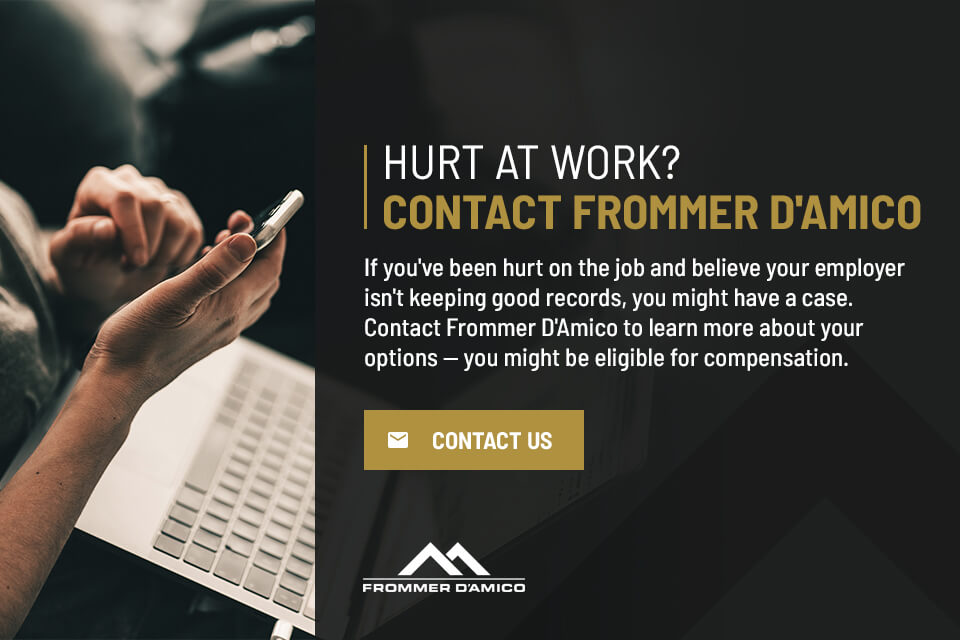An employer might do a lot to reduce the number of work-related injuries that occur, but accidents can and do happen from time to time. In 2019, 5,333 people died on the job across the United States. There were 3.2 recordable cases per 100 employees in Pennsylvania in 2019, with 1.8 cases per 100 employees requiring a person to miss work or transfer. The OSHA recordable incident rate varies by industry.
The Occupational Safety and Health Administration (OSHA) requires certain companies to report or record specific types of incidents. The goal of reporting and recording these incidents is to keep accurate records and improve workplace safety. Learn more about what the rules are for OSHA recordkeeping, what counts as a recordable incident and how you can keep yourself safe on the job.
What Is an OSHA Recordable Incident?
With some exceptions, OSHA expects companies that have more than 10 employees to keep records of fatal or serious injuries. The administration defines a recordable accident as the incidents listed below. The term “related to work” means that the injury or illness developed or occurred as a result of a person performing their assigned duties or if something occurred in the workplace that aggravated an existing illness or injury.
- A diagnosis of cancer relating to work
- Cracked teeth or fractured bones due to work
- Punctured eardrums due to work
- A diagnosis of an ongoing, irreversible disease due to work
- An illness or injury occurring on the job or related to the job that needs treatment beyond basic first aid
- An illness or injury occurring on the job or related to the job that leads to restricted work, time away from work, transfer to a different job or a loss of consciousness
- A fatality related to work
An employer’s OSHA records of an injury or fatality need to be kept on-site for a minimum of five years. In February through April of each year, an employer needs to create a summary of all illnesses and injuries recorded during the past year. Both former and current employees can request and receive a copy of a company’s incident records.
Incident reports and records can shine a light on hazards that are common in a particular industry, allowing companies, workers and OSHA to introduce and implement protections that minimize incidents. The goal is to prevent future illnesses and injuries related to work.
While many industries need to follow OSHA’s rules for recording incidents, some industries are considered “low-risk” and are exempt from the requirements. These low-risk industries include many types of retailers, financial institutions and real estate brokers, among others.
What Is Considered an OSHA Recordable Injury?
OSHA has several criteria that determine whether a company needs to record an incident — if an incident results in days away from work, loss of consciousness, transfer to a different job, medical treatment or death. OSHA has created a decision tree to help employers and employees determine if an incident is recordable.
Some of the questions on the “What is considered an osha recordable injury?” decision tree are as follows:
- Is an employee ill or injured? If the answer is no, you can stop here.
- Is the injury or illness work-related? The term “work-related” can mean that it happened on the job or developed as a result of exposure to something on the job. If the answer is no, you can stop here.
- Is the injury or illness new? If the injury or illness has been ongoing, you can update a previous record. Otherwise, create a new record for it.
- Does the injury or illness meet specific criteria? Was the employee injured enough to have to miss work, need medical treatment or have to change jobs? If so, the incident is recordable.
Let’s take a closer look at the criteria an injury or illness needs to meet to be recorded by an employer.
Death
An employer needs to record any work-related injury or illness that results in the death of an employee. OSHA has more stringent reporting requirements for incidents that result in death. In addition to recording the incident on Form 300 and completing Form 301, an Injury and Illness Incident Report, an employer also needs to report the death within eight hours of it occurring.
A company needs to either fill out an online form or call the nearest OSHA office to report a death. Another option is to report the death to OSHA’s 24-hour hotline. Although there are some states that have their own reporting requirements, Pennsylvania is a federal OSHA state, meaning the federal rules apply to businesses operating in Pennsylvania.
Days Away From Work
If an employee needs to stay home from work due to their recordable injury or illness, an employer needs to record the injury on Form 300 and provide the number of calendar days of work the employee missed. If an employee is currently staying home due to an injury or illness and is expected to remain away from work for an extended period, the person completing the log should estimate the number of days the employee will miss and update as needed when the employee returns.
An employer should start counting days away from the day after a person became ill or was injured to get an accurate count. If an employee comes to work even though a health care provider told them to stay home, the employer should still record the number of days recommended by the medical provider. The same is true when an employee stays home for longer than medically recommended.
Even if an employee is scheduled to be on vacation right after an injury or if there are days they wouldn’t have worked due to time off or weekends, an employer should include those days, as the log should report calendar days away from work, not only work or business days.
Loss of Consciousness
Should an employee lose consciousness due to an illness or injury, the employer must record it. OSHA states that the injury or illness is recordable even if a person only loses consciousness for a short period.
The exception is if the loss of consciousness occurs due to a health condition, such as epilepsy, narcolepsy or diabetes. For example, if an employee has a seizure at work that isn’t triggered by their job, an employer doesn’t need to record it.
Transfer to Another Job or Restricted Work
Some types of injury or illness might limit a person’s work or require them to change responsibilities or job duties. OSHA has rules to help employers determine if an injury or illness resulted in work restrictions.
For example, if the employer prevents an employee from performing a routine function of the job or if a medical provider recommends that an employee not perform certain routine tasks, the incident should be recorded as restricting work. The same is true if an employee doesn’t work a full day due to the injury. OSHA considers tasks to be routine functions of a job if an employee performs them at least once a week.
Additionally, employers should treat transfers to another job similarly to incidents that restrict work. The employer should record the number of days an employee was transferred to a different job. A job transfer involves assigning an employee different duties than normal.
Treatment Required Beyond First Aid
If an employee needs medical treatment that goes beyond first aid, the employer needs to record the incident and note if the employee remained at work, wasn’t transferred and could perform their routine job functions.
OSHA defines medical treatment as care provided to a person to combat a disorder or disease. It doesn’t include diagnostic procedures such as blood tests and x-rays or a visit to a health care provider for counseling or observation. Treatments that fall under the banner of first aid also don’t qualify as medical treatment.
Particular types of injuries and their treatments need to be reported to OSHA within 24 hours of occurrence. Those include the loss of an eye, any amputations or in-patient hospitalizations.
Recordable Injury or Illness Diagnosed by a Medical Professional
Some injuries or illnesses might not fall neatly under the above criteria but should still be recorded. OSHA asks that work-related illnesses or injuries such as a broken bone, punctured eardrum, cancer or another type of irreversible disease be recorded by employers.
What Doesn’t Qualify as a Recordable Incident?
While OSHA requires employers to record incidents that require medical treatment, it doesn’t consider those that can be treated with first aid measures as recordable incidents. There’s no need for an employer to perform OSHA recordkeeping when first aid can solve the problem.
OSHA’s definition of first aid measures comprehensive. Both employers and employees need to understand what a medical treatment is in the eyes of OSHA and what’s merely first aid. According to OSHA, first aid measures include:
- Giving an employee a nonprescription medication at nonprescription strength: Administering an over-the-counter medicine is usually first aid. An exception would be if a medical provider recommends giving a person a nonprescription medication, such as ibuprofen, at prescription strength.
- Giving a person a tetanus shot: Is a tetanus shot an OSHA recordable injury? If an employee gets a tetanus booster after stepping on something rusty, it counts as first aid. Getting another type of immunization, such as a rabies shot, would fall under the medical treatment umbrella.
- Covering a wound: Using a bandage or gauze pad to cover a wound counts as first aid and isn’t recordable. If a person needs stitches or staples, they’re receiving medical treatment and the employer needs to record the incident.
- Cleaning the surface of a wound: Flushing a wound to clean it or soaking it counts as first aid.
- Applying heat or cold: Using ice packs or heating pads to ease discomfort or reduce swelling count as first aid per OSHA.
- Supporting an injury with a non-rigid support system, such as an elastic bandage: Wrapping an injury qualifies as first aid. Using a rigid device, such as a cast, to keep a body part immobile falls under the medical treatment umbrella.
- Draining fluid: Relieving pressure by draining a blister or by drilling into a finger or toenail qualifies as first aid.
- Using a temporary immobilization device: If a person needs a sling or splint or a neck collar while being transported, OSHA considers that first aid rather than medical treatment.
- Cleaning the eyes: Using irrigation or a cotton swab to remove a foreign object from the eye is first aid. Using tweezers or another simple method to remove a splinter from the eye also qualifies as first aid.
- Eye patches: Having an employee wear an eye patch counts as first aid.
- Giving fluids to an employee: Having someone drink fluids to relieve heat stress is first aid.
- Massage: Massaging a sore or over-extended body part usually counts as first aid. The exception is if the massage is part of chiropractic treatment or physical therapy. In that case, it’s considered a medical treatment.
Non-Recordable, Recordable and Reportable Injury Examples
All work-related injuries or illnesses fall into three categories, according to OSHA. The category type determines an employer’s responsibility in that situation. Here’s how to categorize injuries at work and how to recognize which type of incident you might be handling.
Non-Recordable Accidents
A non-recordable incident is one that doesn’t have the criteria of a recordable incident. Often, it’s an injury or illness that you can successfully treat with first aid. Some examples of a non-recordable incident include:
- An employee gets a headache on the job: They take non-prescription acetaminophen or ibuprofen and are able to continue working. They complete their routine tasks for the day without further incident.
- An employee touches a hot surface and gets a burn: They apply burn spray or cream to it and continue working.
- An employee cuts themselves on the corner of a piece of furniture: They clean the wound and apply a bandage. They don’t go home for the day or see a medical professional.
- Employees receive the flu vaccine: If an employer offers vaccines to prevent illness, it doesn’t qualify as medical treatments and isn’t recordable.
- An employee’s arm is sore: They apply ice to it to ease discomfort and take non-prescription pain relievers.
Recordable Incidents
Alternatively, recordable incidents meet at least one of the criteria mentioned above, such as death, requiring medical treatment or causing an employee to miss work. A few examples include:
- An employee gets bitten by a wild animal on the job: They’re given a rabies vaccine as a precaution. Since the rabies vaccine falls under medical treatment, per OSHA, the incident needs to be recorded.
- An employee falls from a roof and dies: Any incident that results in a fatality needs to be recorded.
- An employee cuts themselves with a tool and needs stitches: If the employee needs to go to a medical provider, who closes the wound with sutures or staples, it counts as medical treatment and needs to be reported.
- An employee develops asthma after exposure to fine particulate matter on the job and they need to change roles: If an employee develops asthma and can no longer do their job as assigned, the incident needs to be recorded.
- An employee has hearing loss: If an employee loses their hearing or has a punctured eardrum due to loud noises at work, the employer needs to record the event.
Reportable Injuries
Some recordable incidents are also reportable incidents, meaning an employer needs to contact OSHA about them within 24 hours of occurrence. These incidents include:
- Death of an employee: If an employee dies on the job due to a work-related event, the employer needs to inform OSHA within eight hours.
- An employee loses an eye or another body part: If something happens on the job that causes an employee to lose an eye or if a part of the body needs to be amputated, employers need to report the incident within 24 hours.
- An employee is admitted to the hospital: If a workplace incident causes an employee to be hospitalized, the employer has 24 hours to report it.
What to Do If Your Employer Isn’t Keeping Accurate Incident Records
If your employer has more than 10 employees and doesn’t qualify for an exemption, it must follow OSHA’s recordkeeping rules. Primarily, that means keeping records of new, work-related incidents that meet the recordable criteria. All employees need to use Form 300 to log incidents and Form 301 to report incidents. If an incident resulted in death, amputation or hospitalization, it needs to be directly reported to OSHA, as well.
At the end of the year, an employer needs to review the log of incidents and use it to create an annual summary. After verifying the summary, an employer needs to post it for employees to see. The posting needs to be in a visible location, such as on a break room wall. It should be posted by Feb. 1st of the following year and remain in place through April 30. Employers need to maintain records of incidents for at least five years.
While OSHA has regulations in place for recording and reporting work-related injuries, it doesn’t mean that every employer is going to play by the rules. Recording incidents gives a company a chance to learn from mistakes and make the workplace safer. However, those incidents can also put a company under scrutiny or make it concerned that it’ll be penalized. Not keeping accurate records puts employees at risk for future injuries and can mean that an employee faces several issues if they get hurt on the job.
If you suspect that your employer is skirting OSHA regulations and doesn’t have up-to-date incident records, the first thing you can do is ask to see the summaries from past years. If your employer refuses to show you the records or doesn’t have them, you might consider reporting your employer to OSHA. The agency can fine companies that don’t follow posting regulations.
What happens if you get injured at work and learn that your employer doesn’t keep records? Consider consulting a workers’ compensation attorney to learn about your options. In the meantime, be sure to record the following:
- The type of injury
- How it related to work
- The medical treatment you received
- If you missed work and for how long
- If you had to avoid certain functions or perform a different job for a period
- The severity of the injury (for example, if you were hospitalized or lost a limb)
Hurt at Work? Contact Frommer D’Amico
A company’s safety performance must be strong and documented for the health of its employees. If you’ve been hurt on the job, you might have a case. Contact Frommer D’Amico to learn more about your options — you might be eligible for compensation.



